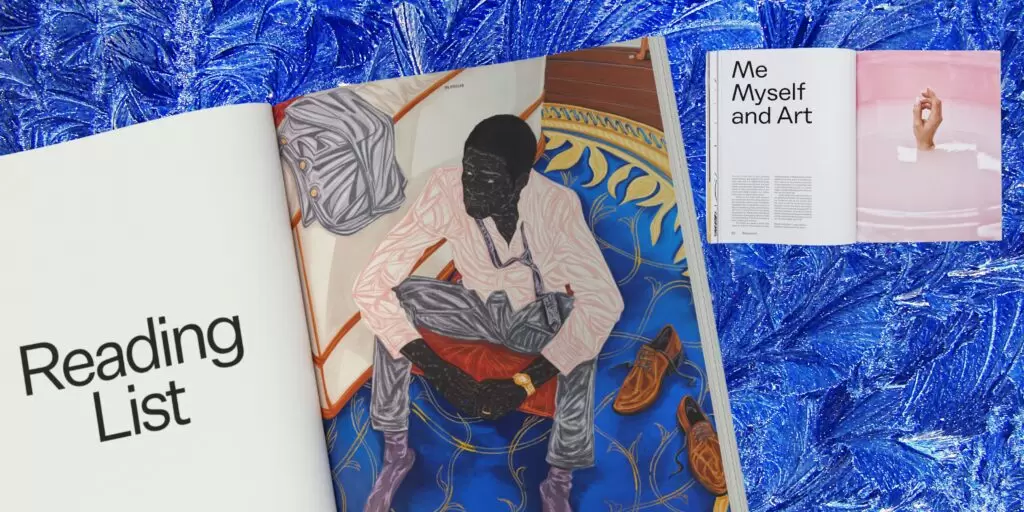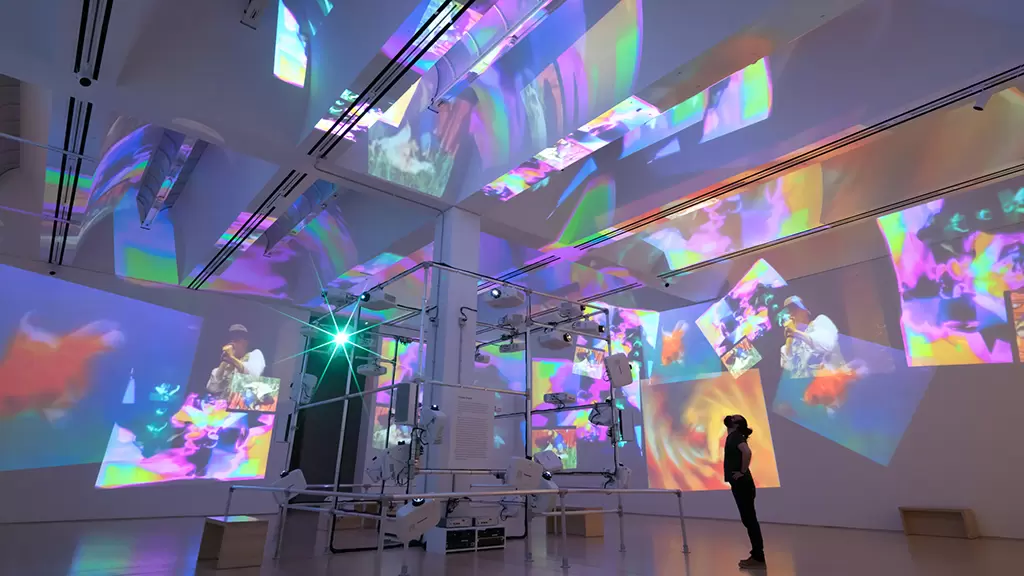Survival Tactics: Getting the Show on the Road: Planning for Travelling Exhibitions
For an independent curator (or any curator at all), the touring exhibition can be the dream—but it can also pose a host of logistical challenges, especially for those who have never coordinated one. Despite that, curating and organizing a travelling exhibition isn’t an impossible challenge. Let’s break it down!


Featured image: Julian Mora from Unsplash
Maybe you’ve got an idea for an art exhibition that can travel, your artists all lined up and your ideas fleshed out, and other times it’s an innocent statement from a visitor at the opening of a show you thought would never tour: you should take this on the road. For an independent curator, the touring exhibition can be the dream—what better way to see an idea evolve in different spaces and in different contexts, and to increase the profile of the artists you’re featuring? The logistical challenges are significant but not insurmountable. Let’s dive in!
Finding Your Venue
The first venue is always the hardest to find. When you’re planning a touring exhibition, try to consider how the exhibition might tour (east to west, for example) to ensure that you’re keeping costs down. Once you have a few interested, plan a tentative schedule (ideally with as few gaps as possible between presentations) and start nailing down the expenses. Your exhibition package should include as much information as possible, including:
- List of works (with insurance values available upon request)
- Images of works (with high-res images available upon request)
- Technical requirements, including running feet, whether there will be projection, specialized installation requirements (the artist’s presence during installation, exhibition furniture, etc.)
- Brief curatorial statement describing your thesis, the relationship between the artists in a group show, or the critical context for a body or bodies of work in a solo exhibition—bonus points if you can make a local connection to the gallery you’re pitching to
- Biographies of contributors (curator, artists, guest writers)
- List of related programs (talks, tours, workshops)
- Fees (with estimates on shipping, if possible)
If the thought of talking money makes you nervous, read on!
The Budget

© Rodrigo Abreu from Unsplash
Start with a realistic assessment of what you need to have, and what would be nice to have. The first and the final iterations of the project will require the most expenses, but these should be shared between venues to reduce barriers to accepting the show. Some things to think about include:
- Insuring the work: Institutions who are taking a touring exhibition are generally required to provide nail-to-nail insurance on the works, but they will require a listing of artwork values to provide their insurance brokers. Are there any points in time in which the artworks might not be under an institution’s insurance plan?
- Return shipping: remember that returning the work might cost more if you’re sending it back framed, or have repacked it in bulkier packages for travel between sites
- Preparing works for shipment: Do you need to commission purpose-built crates for shipping, or can the works be soft-packed for travel?
- Framing and preparing works: Does artwork require professional framing? Do you need to construct or purchase plinths or other exhibition furniture?
- Artist and curatorial fees: How are you compensating yourself and the participating artists? In Canada, CARFAC (https://www.carfac.ca/) provides a minimum fee schedule that will vary depending on the operating budget of the participating sites; in the United States W.A.G.E. is a resource (https://wageforwork.com/home#top). Other countries have similar recommended fee structures in place—make sure that you consult with your artists as well! . (add a note regarding that this should be review for each country)
- Installing the work: Does the artist need to be onsite to install the works? Do you have institutional loans that require a courier or the presence of a conservator from the lending institution to install the work? Does the curator need to be present to oversee the installation, or can the exhibition design be prepared using gallery floorplan and elevations drawings?
- Artist and Curator travel: Sometimes this is a need to have; sometimes it’s a nice to have. Do the artist and curator need to be onsite for the opening? Are there aspects of the work (research, production, or otherwise) that require the artist and curator to travel to the site beforehand? Is an artwork being modified or changed in any way at each stop of the tour, requiring the artist’s presence?
- Artist and Curatorial Talks, Panels, Programs and Workshops: What kind of interpretation would you propose? In-person or virtual? What fees will you provide to participants? Once again, in Canada mandatory minimums are put forward by CARFAC, but in the US W.A.G.E. can be a great starting point.
- Materials Cost: Are you proposing workshops that might require materials? Do participating galleries need to produce something locally for the show, such as exhibition vinyl or painting the space?
- Publication Fees: Is contributing to a print publication part of the overall fees for a host institution, or is it an option for those that would like to be included? What fees will go to support guest writers? What are the design costs, and the costs for your print run?
- Donor Incentives: Whether you pitch the project to individual donors or fundraise using crowdsourcing platforms, you should consider the costs (production and artist fees) for what you’re offering in your initial budget
When you’re pitching an exhibition to a gallery, make sure that you’re up-front about what you need early in the conversation to ensure that all goes smoothly in your negotiations. Once you’ve got a rough idea of what the costs and potential revenue might be, that’s the point in time in which you add up the venues and spread the remaining expenses evenly between them. If you haven’t determined what the exact cost might be—there’s always some variability until all the venues are locked down—be honest and clear, and provide the best estimate you can.
Fundraising
Museums are increasingly under pressure to fundraise for exhibitions—and that pressure is now being felt by freelance curators. Coming to a potential site with some funding in place to support the presentation of your show can be helpful.
Your first recourse as a freelance curator should be to look for arts council grants to support your project. Look critically at your budget: where do you see gaps in funding? Often these gaps occur in two places: research and development for a project, and for the publication. These funding priorities are fantastic to look for public support.
Seeking support from individual donors and private foundations is more complicated. Private foundations often have the same funding priorities as public funders, but individual donors generally give money that is more fungible in its use in exchange for predefined incentives—allowing you to offset the nitty-gritty technical costs that are hard to fund with public grants. There are, however, certain sensitivities that you should consider:
- Traditional incentives (such as having top-listing as an exhibition sponsor) might already be promised to pre-existing donors by certain host venues
- The donor incentive structure at certain host venues might clash with what you’re offering potential sponsors as there is a tiered system in place at most institutions that reflects the institution’s priorities, not necessarily yours
- Your ability to give charitable tax receipts: is there a host institution willing to receive funds on your behalf, and issue tax receipts to the donors to this project? Often, the first venue acts as the originator of the show, and this should be part of your conversation with them. Remember that there are stringent laws associated with charitable gifts, and you need to be clear about what incentives are in place for charitable gifts with the host institution!
Most public granting agencies’ recognition requirements won’t be an issue for your host venue; what you offer as incentives to private donors might be. This is a great place to consider alternative incentives for private donors, including experiences (tours of the artists’ studios, private tours of the exhibitions) or the opportunity to purchase a limited-edition artists’ multiple from an artist (make sure to include both production costs and fees for the artist in your budget!). For private foundations, you will need to negotiate with the host institutions about meeting their recognition requirements—and if the funds offset the costs of the project, most institutions would be happy to have those conversations.
Checklist
In my experience, most logistical issues with travelling exhibitions occur at the beginning of the tour and at the end. Make sure that you:
- Are clear with the artists and all host institutions about the real costs of the project
- Are clear with private donors, public granting agencies, private foundations and hosting institutions about donor incentives, recognition opportunities, the provision of charitable tax receipts, and how funds are being spent
- Include the takedown and return of the artworks at the end of the tour—you’d be surprised at how often these costs get missed!
- Enjoy the process—it’s a lot of work, but for the right project, it’ll be worth it!
In conclusion, being clear about what is necessary and what is nice is essential to ensuring that your touring project has the resources it needs to thrive. There are a lot of moving parts to a travelling exhibition, but the rewards of seeing a project evolve as it moves between venues is a rich reward for those who are bold enough to take on this challenge.





